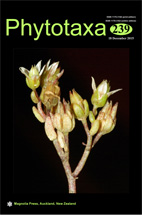Abstract
A new Annulatascus species, A. saprophyticus, found on decaying wood in freshwater in northern Thailand is introduced in this paper. The new taxon is illustrated, described and compared with other species in the genus, as well as a key to genus is provided. It differs from other species in the genus in having straight up right necks at one end, paraphyses embedded in a gelatinous matrix, and 0–3-septate, fusoid to lunate ascospores, which are larger than other species in the genus. Phylogenetic analyses based on LSU gene data showed that A. saprophyticus belongs in Annulatascus sensu strict (Annulatascaceae, Annulatascales, Sordariomycetidae). Based on the molecular data and a reevaluation of morphology, a new genus Pseudoannulatascus in Annulatascaceae is introduced to accommodate Annulatascus biatriisporus.

